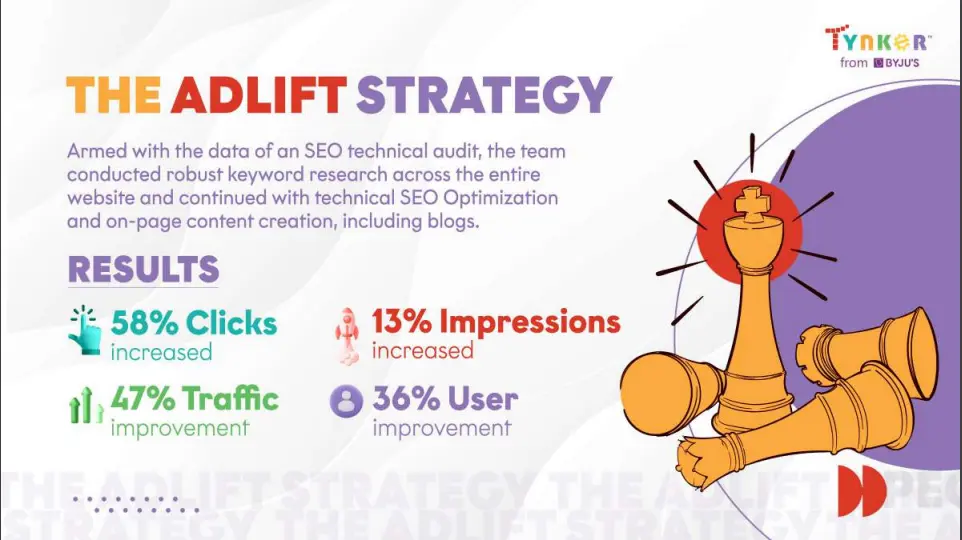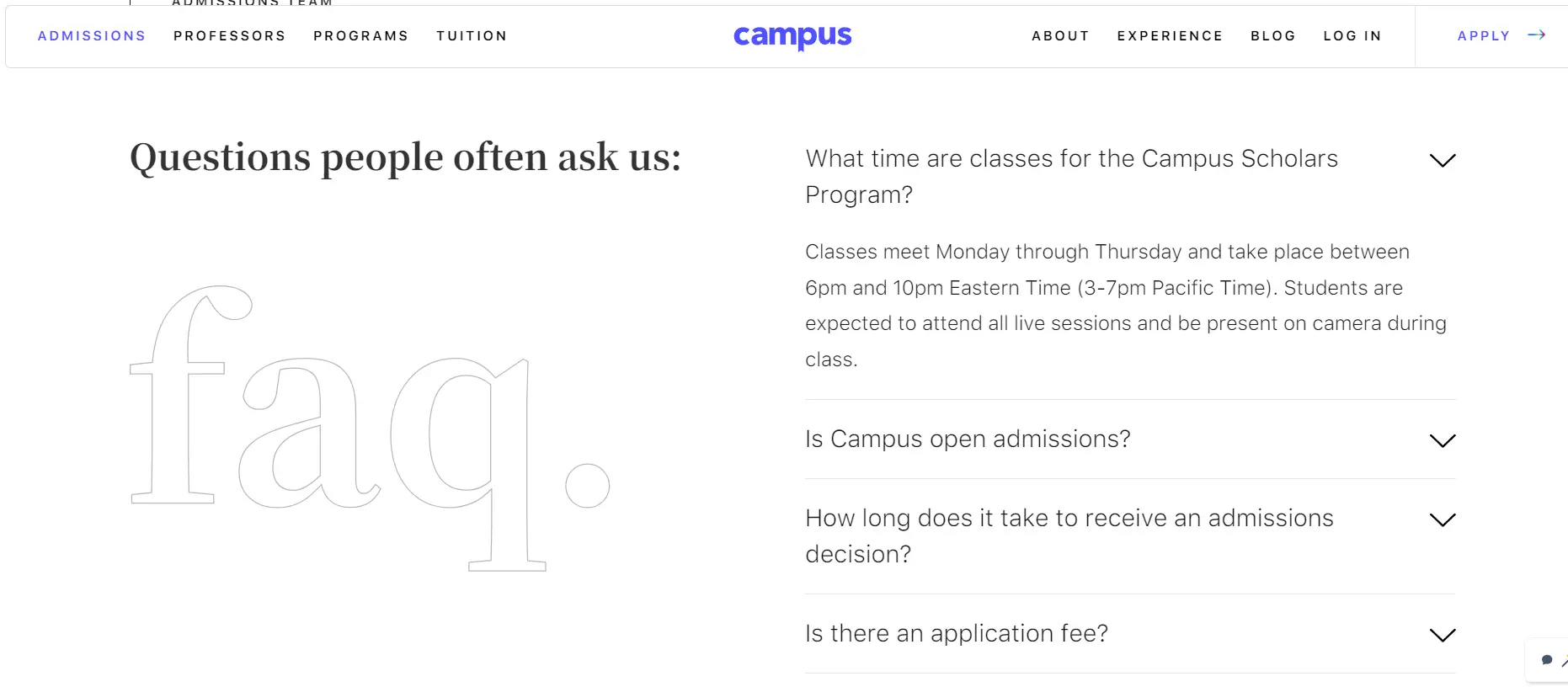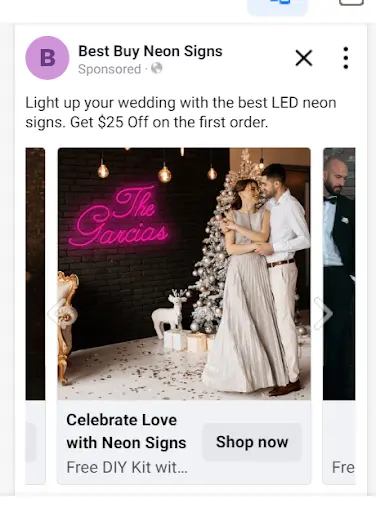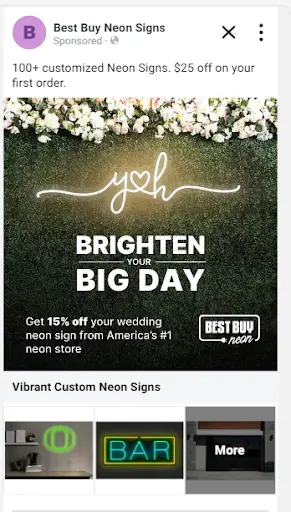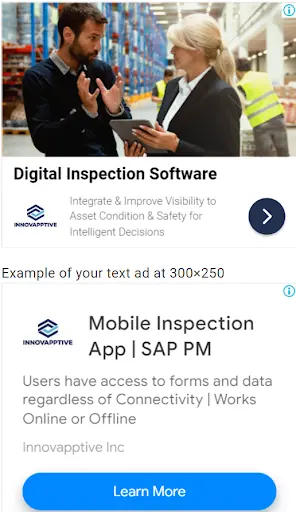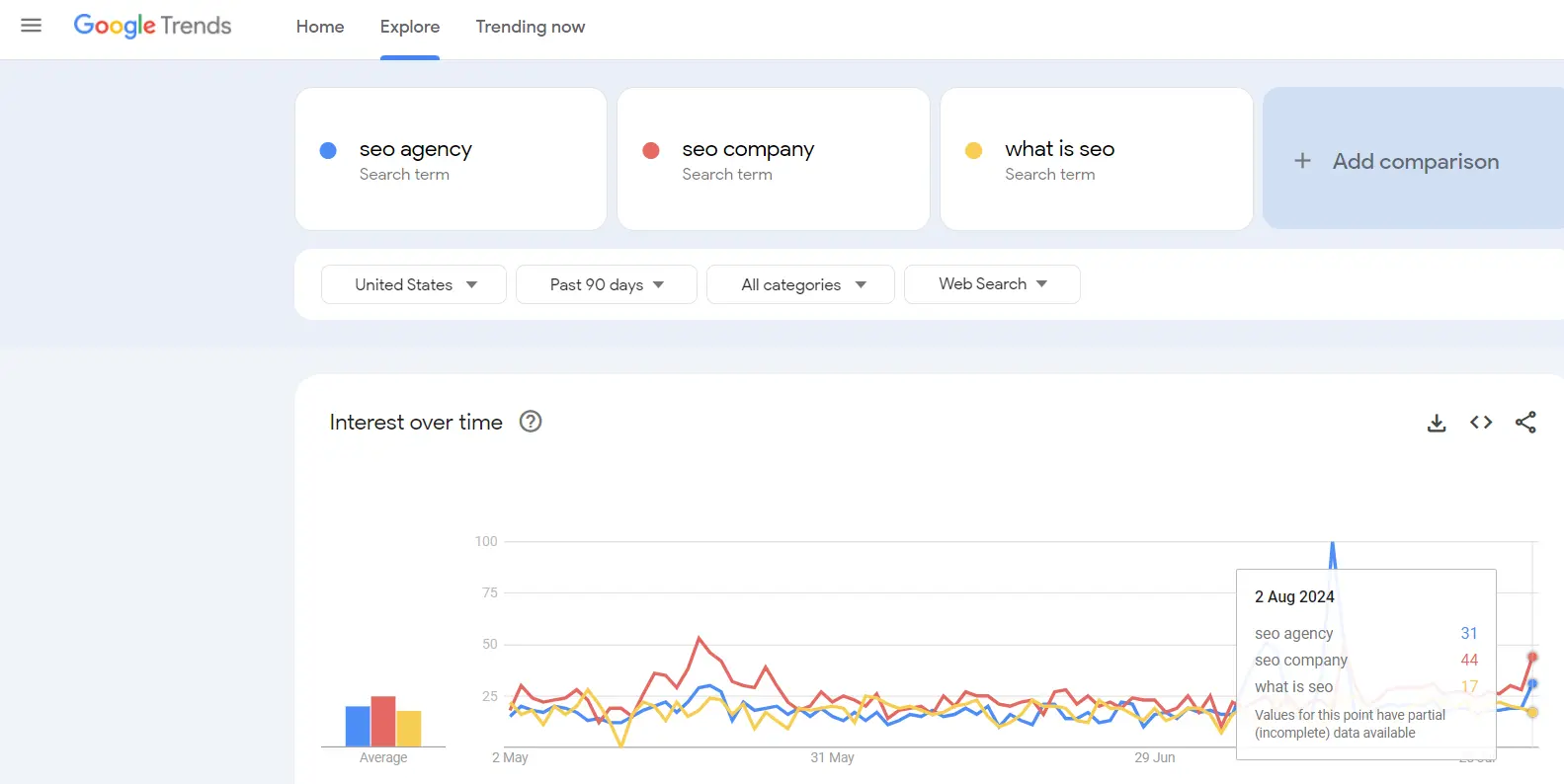All You Need to Know About Top of Funnel Marketing
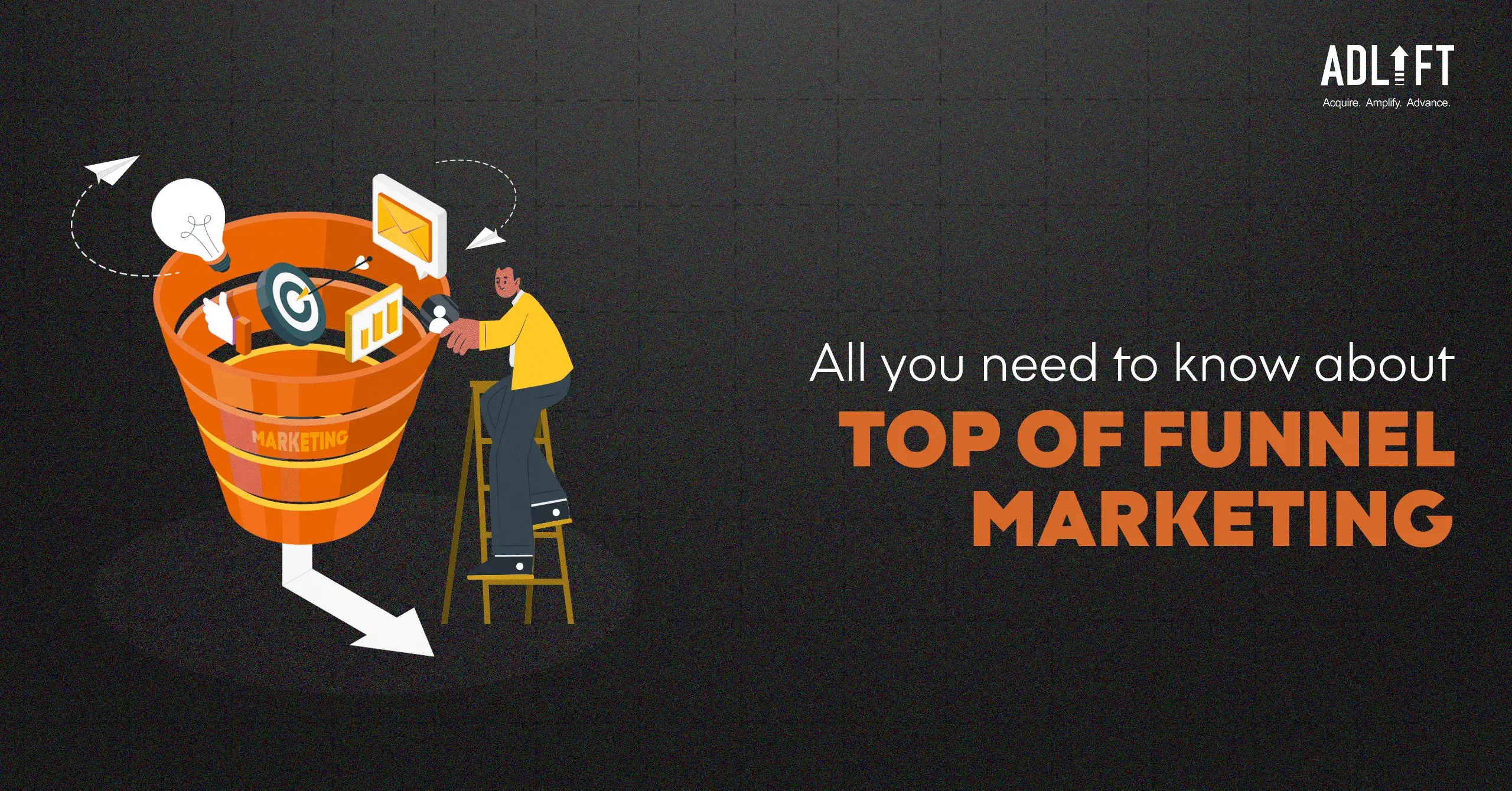
Every day, we come across several ads online that feature some of our favorite items. Without batting an eye, we click on the ads before reading the reviews. Ever wondered how it happens in the first place?
It’s all embedded in marketing. As the world evolves rapidly and businesses switch gears effortlessly, it’s important to understand marketing and advertising closely. They are an inseparable part of a successful business. But what catches the eye is just the tip of the iceberg.
The name of the iceberg is the marketing funnel.
A normal person’s purchase cycle is divided into phases: Awareness, Consideration, Conversion and Loyalty. These phases encompass a marketing funnel and are the underlying psychological determinants of all our purchases.
This blog will help you understand Top of Funnel marketing in depth. Right from its meaning, its uses, and aim to the various performance metrics and methods; this blog will be your guide for all things at the top of the funnel.
What is Top of Funnel Marketing?
Simply put, top of funnel marketing comes into play the second consumers lay their eyes on an ad. The short span between deciding to click on a product and actually clicking on it is the best measure of good top-of-funnel marketing.
The aim of top-of-funnel marketing is to grab attention and push a consumer towards active purchasing. Top of funnel marketing entails all activities that aim to create a mental touchpoint of the consumer with the brand.
Hence, it becomes imperative for any brand to employ the most effective upper funnel tactics in order to retain a consumer’s attention. The optimum and best usage of upper funnel marketing ensures a successful customer journey from awareness to loyalty.
The customer journey is a unique map of interactions that each customer has with your brand and marketing touchpoints. Each customer journey is unique. It’s the path each person takes via your website, customer service team, and other brand channels. This enables marketers to adapt their strategies accordingly.
Every stage of the customer journey should further familiarize customers with your brand and leave a lasting impression. Understanding this journey is immensely valuable for brands, providing in-depth insights into potential and engaged customers. This knowledge enables the delivery of targeted communications based on buyer behaviors and preferences, ultimately helping convert more leads and increase customer satisfaction. This is what a usual customer journey entails:
- Awareness: The first stage is where potential customers become aware of your brand through marketing efforts like ads, social media, or content marketing.
- Interest: Once aware, customers show interest by engaging with your content, visiting your website, or following your social media channels.
- Consideration: At this stage, customers compare your product or service with competitors, seeking more information through reviews, testimonials, and detailed content.
- Intent: Customers demonstrate intent to purchase by adding products to their cart, signing up for a trial, or contacting sales for more information.
- Buy The final stage where customers make the purchase, complete the transaction and become paying customers.
About 95% of marketers create ToFu (Top of Funnel) content- the largest share of total marketing content creation. This is mainly because the top of the funnel becomes the base for customer retention and building brand image.
Importance of Top-of-Funnel Marketing
Top-of-funnel marketing strategies can significantly benefit marketing teams in various ways. The below mentioned benefits are key to knowing why the top of funnel marketing should be on your priority list.
Improve SEO Rankings
SEO rankings reflect a website’s position on search engine results for relevant keywords. High-ranking sites attract more customers. Creating top-of-funnel content like blogs, videos, and infographics improves rankings, signalling value to search engines and enhancing visibility, while local SEO boosts foot traffic.
Facilitate Brand Awareness
Increasing brand recognition can lead to higher sales. Consistent branding across top-of-funnel marketing efforts is crucial for this recognition. This includes using the same logo, visuals, color scheme, and messaging across all channels.
Improve Lead Generation
Lead generation campaigns are essential for collecting contact information from potential customers. These campaigns often rely on top-of-funnel content marketing to attract prospects. For instance, a local gym might create exercise videos prompting viewers to enter their information on the gym’s website for more content. This provides the gym with leads to engage in the sales process.
Facilitate Trust with Customers
Top-of-funnel content focuses on delivering value to potential customers and establishing trust. Highlighting testimonials and reviews from satisfied customers further builds confidence in your products or services.
Top of Funnel Marketing Goals
The goal of top-of-funnel marketing is to build trust and interest, not immediate sales. At this stage, focus on engaging potential customers to move them to the next step.
Promoting a Blog Newsletter
Encouraging consumers to sign-up for your blog newsletter can be one of the goals for your business. The aim of this is to give some valuable information or talk about the brand’s products/services. Options include email newsletters, SMS tips, YouTube channels, podcasts, or web push notifications. This helps keep your brand on their radar.
Increasing Social Media Engagement
Social media drives more than half of our business these days. Hence, your business needs to focus on social media followers and engagement. When potential customers see your posts through friends, hashtags, or promotions, they may follow you, providing ongoing opportunities for engagement.
App Downloads or Performance Marketing Goals
SaaS companies or app-based businesses need to increase their app downloads. Calls-to-action in your content help in promoting app downloads. As customers engage with your content, they’ll be more inclined to explore your brand further, enhancing top-of-funnel sales efforts.
8 Tactics of Top of Funnel Marketing
Understanding and implementing effective top-of-funnel marketing tactics is essential for attracting and engaging potential customers, setting the foundation for a successful customer journey and eventual conversion. Let’s take a look at some of the most common types of marketing tactics that businesses can use.
Content Marketing
In 2024, over 50% of marketers intend on increasing their investment in content marketing alone. Content marketing involves creating and sharing valuable, relevant content to attract and keep a specific audience, aiming to drive profitable customer actions. Rather than directly promoting products or services, it offers helpful information that solves problems or entertains the target audience. A solid content marketing strategy meets the audience at their stage in the buyer’s journey, providing the exact information they need. This method aids business growth by drawing in those who will find their offerings most valuable. While using this for top of funnel marketing, you may use different types of content.
We at AdLift helped a major K-12 creative coding platform- Tynker and boosted their SEO strategy along with enhancing their content strategy. As Tynker’s SEO and Content Marketing agency, we conducted a thorough technical audit and keyword research, optimized on-page SEO, and helped create engaging content. Enhancing visibility through digital PR, AdLift incorporated guest blogs and expert interviews, to drive organic growth.
Another company that AdLift steered significant growth for Uneekor, a golf-tech startup. By using strategies to surge their SERP results via PAA (People Also Ask) sections and ample content marketing tools like blogs/interviews- AdLift drove Uneekor’s SEO revenue to 405%.
Blogs / Articles/ FAQs
Blog posts are crucial for B2B and B2C content marketing, helping businesses rank for relevant keywords. They generate organic traffic and guide visitors through the buyer journey. Effective marketers include calls to action in blog posts, encouraging visitors to take the next step and eventually convert into customers. These long-form content pieces drive customers from Google search to the brand’s product/service in an instant. According to Semrush, blog posts are used by 9 out of 10 marketers for lead and sales generation.
As Campus’s SEO and Content Marketing Agency, we wrote informative blogs that were accompanied by FAQs.
Videos
In a screen-focused world, video content marketing is crucial. With 87% of businesses using video, it’s a powerful tool for attracting qualified leads. Effective video content is short, engaging, and informative, helping to build connections and showcase products innovatively. To succeed, videos must be optimized for search engines with keyword-rich titles and descriptions and promoted through social media and online channels. This strategy increases visibility, shares, and likes, driving sales and brand awareness.
Audio Content
Audio is unique in that people can engage with it while multitasking. With the right strategy and context, audio content can effectively reach target customers. According to HubSpot, 25% of marketers incorporate podcasts or other audio content into their content strategies. The best part about audio ads is their seamless integration, making them feel non-intrusive. This presents a golden opportunity for marketers. Audio content is one of the most powerful lead generation tools available. Audio content can include many different kinds of content like-
Native Ads:
Hosts read these ads in podcasts, adding a personal touch. Links to products are included in the podcast’s description or comments.
Branded Channels or Playlists:
Music streaming services partner with advertisers to create branded playlists and channels, enhancing SEO and product visibility.
Sponsored Podcasts:
Podcasts offer engaging, portable content that boosts brand awareness, fosters loyalty, and attracts leads, making them a powerful tool for connecting with your audience.
SEO
Search engine optimization (SEO) is essential for enhancing upper funnel marketing. 39% of marketers prioritize optimizing on-page content with keywords as their main SEO strategy. By optimizing your website for relevant keywords, you boost its visibility in search engine results pages (SERPs), making it easier for potential customers to find your business. Effective SEO strategies drive organic traffic, expanding your reach and increasing brand awareness.
To improve your content with SEO, focus on these tactics:
- Keyword Research: Identify and use relevant keywords that your target audience searches for.
- High-Quality Content: Create valuable, informative, and engaging content.
- On-Page Optimization: Optimize meta titles, descriptions, and headers with target keywords.
- Internal Linking: Link to other relevant pages on your website to improve navigation and SEO.
- Mobile Optimization: Ensure your website is mobile-friendly for better user experience and ranking.
By implementing these SEO tactics, you attract and engage new leads effectively.
Influencer Marketing
The global influencer marketing market has more than tripled since 2019 and is projected to reach a record $24 billion by 2024. Influencer marketing leverages popular personalities to promote your brand, enhancing top of funnel marketing by reaching their vast follower base. These influencers create authentic content that resonates with their audience, building trust and awareness for your brand. By collaborating with influencers, businesses can tap into new customer segments, increase brand visibility, and generate interest among potential customers who might have yet to discover the brand through traditional marketing channels.
Social Media Ads/Marketing
Social media ads and marketing are powerful top-of-funnel tactics. By targeting specific demographics on platforms like Facebook, Instagram, and Twitter, businesses can reach a broad audience.
Eye-catching ads and engaging content help to capture users’ attention, raising brand awareness. 90% of social media marketers believe that building an active online community is essential for a successful social media strategy.
These platforms offer advanced targeting options, allowing businesses to reach users based on interests, behaviors, and demographics. Effective social media marketing drives traffic to your website, increasing the chances of converting visitors into leads and customers. As Best Buy Neon Signs’ SEO and Paid Media Marketing Agency, we made the following ads for them:
PR
Public relations (PR) involves managing your brand’s reputation through media coverage, press releases, and public events. Effective PR strategies generate positive media exposure and build credibility. For top-of-funnel marketing, PR helps by increasing brand visibility and attracting attention from potential customers. It establishes your brand as trustworthy and noteworthy, which can drive interest and generate new leads.
Digital Marketing
Digital marketing encompasses various online strategies, including email campaigns, content marketing, and SEO. Search engines account for 93% of website traffic and Google alone holds a 91% share of the search engine market. It helps reach and engage your target audience through digital channels. For top-of-funnel marketing, digital marketing tactics like informative blog posts or engaging social media content drive traffic and build awareness. It’s essential for attracting new leads and creating a strong online presence.
Guerilla Marketing
Guerilla marketing uses unconventional and creative methods to capture attention and create buzz. This tactic often involves surprising or interactive elements that engage audiences in unexpected ways. In top-of-funnel marketing, guerilla marketing generates significant brand awareness and interest through memorable experiences. It’s a cost-effective way to reach a broad audience and stimulate curiosity about your brand. For example, you can use these tactics-
- Ambient Marketing: Using the environment to promote a brand, like advertising on public stairs.
- Experiential Marketing: Engaging events or experiences for consumers, such as flash mobs.
- Street Marketing: Direct interaction with consumers in public spaces.
- Viral Marketing: Creating content aimed to be shared widely on social media.
Display Ads
Display ads are visual advertisements that appear on websites and apps. They use images, text, and graphics to grab attention and drive traffic to your site. In 2026, U.S. e-commerce businesses are expected to spend over $15 billion on display ads.
For top-of-funnel marketing, display ads increase brand visibility and attract potential customers who may not have discovered your business otherwise. They are effective in creating brand awareness and encouraging initial interactions with your brand. As Innovapptive’s SEO and Paid Media Marketing agency, these are some of the display ads that we made for them.
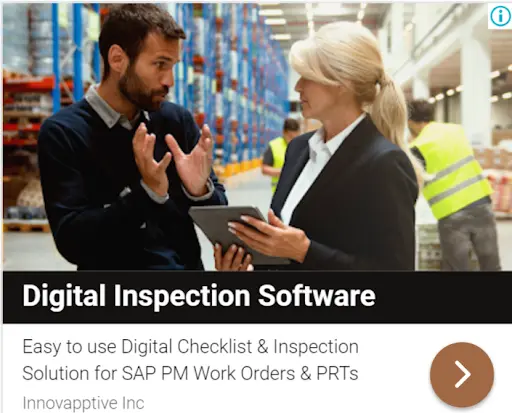
Top Metrics to Track Your Results
The real test of a successful campaign begins by tracking the results. Similarly, there are various metrics to effectively measure the results of your marketing tactics. This section will take you through four main determinants: Reach, engagement, website traffic and brand lift.
Reach
How many eyeballs can you get on your ad or campaign? Top-of-Funnel (TOFU) marketing is all about exposure, aiming to get your brand in front of as many potential customers as possible. The key metrics here are impressions and unique viewers. Reach counts the number of unique viewers who see your content. It’s important to cast a wide net and get as many new people as possible to see your ad.
Impressions, the total number of times your content is displayed, including repeated views by the same user, show how often your ad appears. If you’re getting more impressions than reach, it means people are viewing your content multiple times, indicating memorable content.
However, reach might be more important if your goal is to scale your following quickly. At the start of your social media journey, focusing on reach helps establish your brand and expand your audience effectively.
Engagement
Content engagement covers the different ways users interact with your material. This includes clicking on a piece of content, leaving comments, sharing it with friends, saving it for future reference, or subscribing for more updates.
These interactions are crucial because they show how users are moving along their buying journey and offer valuable insights into their behavior. By analyzing these engagement metrics, marketers can better understand what drives purchasing decisions and how effectively their content influences sales.
Essentially, high engagement indicates that your content is resonating with your audience and playing a significant role in driving their buying actions.
There are specific metrics that help in measuring your engagement. Here is a list of 8 engagement metrics that you can check to properly assess the success of your campaign-
Conversion Rate
Conversion rate measures the percentage of visitors who complete a desired action, such as making a purchase or signing up for a newsletter. It reflects how effectively your site or campaign turns visitors into customers. A higher conversion rate signifies successful marketing and user engagement.
In upper funnel marketing, this metric is the first and foremost determinant of the success of your campaign. Tools like Google Analytics, Kissmetrics and Hubspot’s website Grader can help you to keep a track of your website’s performance.
Net Promoter Score (NPS)
Net Promoter Score assesses customer loyalty by asking how likely customers are to recommend your brand. A high NPS means that customers are enthusiastic about your brand and are likely to spread positive word-of-mouth.
Customer Satisfaction
Customer satisfaction reflects how happy customers are with your product or service. High satisfaction levels usually lead to greater customer loyalty and positive reviews, while low satisfaction can indicate areas needing improvement.
Ticket Volume
Ticket volume represents the total number of customer service issues or inquiries received. It helps gauge the level of support required and can highlight potential problems with your product or service that need addressing.
Social Media Engagement
Social media engagement tracks interactions like likes, comments, and shares on your posts. It measures how effectively your content resonates with your audience and how actively they are participating with your brand.
Customer Lifetime Value (CLV)
Customer Lifetime Value estimates the total revenue a customer will generate for your business over their entire relationship with you. It helps determine the long-term value of acquiring and retaining customers and guides investment in customer relationships.
Customer Retention Rate
Customer retention rate measures the percentage of customers who remain with your business over a certain period. High retention rates indicate strong customer satisfaction and effective engagement strategies.
Churn Rate
The churn rate shows the percentage of customers who stop using your product or service within a specific timeframe. A high churn rate can signal dissatisfaction or better options available elsewhere, while a low churn rate reflects successful customer retention efforts.
Website Traffic
Website traffic refers to the number of visitors a site attracts over a specific period. Tools like Google Analytics and HubSpot help track this traffic. High traffic often leads to more chances for generating leads and increasing sales, making it crucial for evaluating financial performance. Website traffic is measured using several key metrics, including:
- Bounce Rate: The percentage of visitors who leave your site after viewing only one page. A high bounce rate might indicate that your landing pages need to be more engaging and relevant to the visitors.
- Average Session Duration: The average amount of time visitors spend on your site during a single session. Longer durations typically suggest that users are finding your content engaging and valuable.
- Pages Per Session: The average number of pages viewed during a single visit. Higher numbers indicate that users are exploring more of your content, which can signal greater interest and engagement.
By analyzing website traffic, businesses can gain insights into their audience and fine-tune their top-of-funnel marketing strategies to attract even more visitors. There are 6 types of website traffic. Here are the main types of website traffic:
- Organic Traffic: Visitors who find your site through search engines like Google, often by clicking on unpaid search results. It’s crucial for long-term growth and indicates good SEO practices.
- Direct Traffic: Users who visit your site by typing your URL directly into their browser or using a bookmark. This traffic shows strong brand recognition and customer loyalty.
- Referral Traffic: Visitors coming from other websites via links or mentions. It helps build relationships with other sites and indicates the effectiveness of your online presence.
- Social Traffic: Users arriving at your site from social media platforms like Facebook or Twitter. It reflects the impact of your social media marketing efforts and engagement.
- Paid Traffic: Visitors who come from paid advertising campaigns, such as Google Ads or social media ads. It provides immediate traffic and helps in targeting specific audiences.
- Email Traffic: Users who visit your site through links in email campaigns or newsletters. This type of traffic shows how effective your email marketing strategies are at driving engagement.
Brand Awareness
Top of funnel marketing boosts brand awareness by exposing your brand to a wider audience through strategies like social media ads, content marketing, and influencer partnerships. This increased visibility helps potential customers recognize and recall your brand, making it a top choice when they’re ready to make a purchase. Higher brand awareness translates to more trust and familiarity, leading to increased customer interest and engagement. This is how you can properly assess if your brand awareness has increased-
- Customer Sentiment: Measures how customers feel about your brand through reviews and feedback. Positive sentiment indicates strong brand affinity, while negative sentiment signals areas needing improvement.
- Branded Search Volume: Tracks the number of searches for your brand name. An increase suggests growing brand recognition and interest, reflecting successful top-of-funnel marketing efforts.
- Google Trends Data: Shows the popularity of search terms over time. Rising trends for your brand indicate increasing awareness and interest, helping gauge the effectiveness of your marketing campaigns.
There are multiple tools available online that can help you judge the outcomes of your marketing tactics and their impact on your brand. These tools include Semrush, Survey Monkey, Sprout Social, and Upfluence (for influencer marketing). These tools provide you with detailed analysis reports, survey forms and management services that can help you further.
Top of Funnel Marketing: Laying a Solid Foundation for Businesses
Top of funnel (TOFU) marketing is essential for building a solid foundation for your business. By focusing on strategies that increase brand visibility and attract a wide audience, you set the stage for future engagement and conversion.
Effective TOFU tactics, such as compelling content creation, targeted social media campaigns, and engaging video marketing, drive awareness and draw potential customers into your sales funnel. As you attract more visitors, you enhance your brand’s recognition and establish credibility. Remember, the goal at this stage is not immediate sales but to create a lasting impression that nurtures future leads. By investing in TOFU marketing, you pave the way for sustained growth and long-term success.
